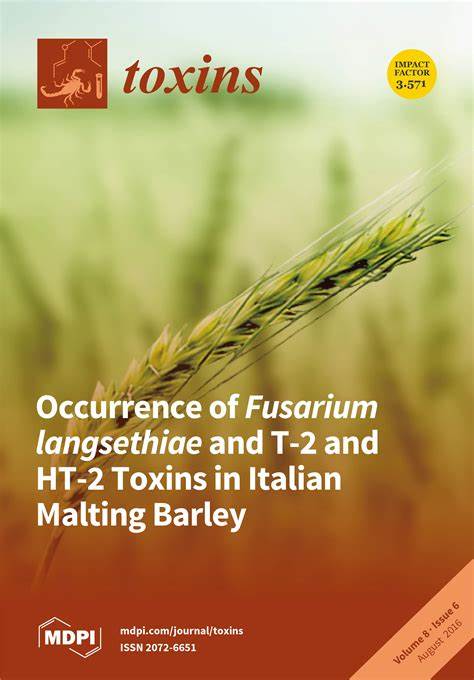利用近红外光谱快速检测地栽玉米中的黄曲霉毒素
IF 3.9
3区 医学
Q2 FOOD SCIENCE & TECHNOLOGY
引用次数: 0
摘要
黄曲霉毒素是一种致癌霉菌毒素,可污染多种作物,尤其是玉米。为了保护消费者免受这些污染物的危害,许多国家制定了较低的监管阈值,仅为几微克/千克。食品控制需要进行耗时的分析,而采样是其中的关键步骤。因此,开发快速、灵敏、准确的方法具有重要的卫生和经济意义,这些方法甚至可以在收获时在线应用,以尽快确定需要剔除的批次。在这项研究中,我们使用高效液相色谱-质谱法分析了 3 年中收获时采集的 500 多个玉米样本的黄曲霉毒素污染情况。在这些样品中,只有 7% 受到污染,但有时污染程度大大超过了欧洲的规定。我们证明,近红外光谱法(NIRS)可以根据谷物样本的黄曲霉毒素污染程度(低于或高于欧盟规定)对其进行分类,从而为谷物样本的分类提供很大帮助。为了建立模型,使用了所有受黄曲霉毒素污染的样品和同等数量的无黄曲霉毒素样品。近红外光谱仪的性能不足以对毒素进行足够精确的量化。不过,利用二次 PCA-DA 模型,根据黄曲霉毒素的污染程度和欧洲法规对自然污染的玉米样品进行鉴别的能力非常出色。该模型对黄曲霉毒素 B1 的准确度为 97.4%,对黄曲霉毒素总量的准确度为 100%。本文章由计算机程序翻译,如有差异,请以英文原文为准。
Rapid Detection of Aflatoxins in Ground Maize Using Near Infrared Spectroscopy
Aflatoxins are carcinogenic mycotoxins that may contaminate many crops and more especially maize. To protect consumers from these contaminants, many countries set up low regulatory thresholds of few µg/kg. The control of food requires time-consuming analysis for which sampling is a key step. It would therefore of key sanitary and economic relevance to develop rapid, sensitive and accurate methods that could even be applied on line at harvest, to identify batches to be excluded as soon as possible. In this study, we analyzed more than 500 maize samples taken at harvest during 3 years for their aflatoxin contamination using HPLC-MS. Among them, only 7% were contaminated but sometimes at levels largely exceeding European regulations. We demonstrate that Near InfraRed Spectroscopy (NIRS) could be of great help to classify cereal samples according to their level of aflatoxin contamination (below or higher than E.U. regulation). To build the model, all AF contaminated samples as well as an equivalent number of AF free samples were used. NIRS performance was not sufficient to quantify the toxins with adequate precision. However, its ability to discriminate naturally contaminated maize samples according to their level of contamination with aflatoxins in relation to European regulations using a quadratic PCA-DA model was excellent. Accuracy of the model was 97.4% for aflatoxin B1 and 100% for total aflatoxins.
求助全文
通过发布文献求助,成功后即可免费获取论文全文。
去求助
来源期刊

Toxins
TOXICOLOGY-
CiteScore
7.50
自引率
16.70%
发文量
765
审稿时长
16.24 days
期刊介绍:
Toxins (ISSN 2072-6651) is an international, peer-reviewed open access journal which provides an advanced forum for studies related to toxins and toxinology. It publishes reviews, regular research papers and short communications. Our aim is to encourage scientists to publish their experimental and theoretical results in as much detail as possible. There is no restriction on the length of the papers. The full experimental details must be provided so that the results can be reproduced.
 求助内容:
求助内容: 应助结果提醒方式:
应助结果提醒方式:


